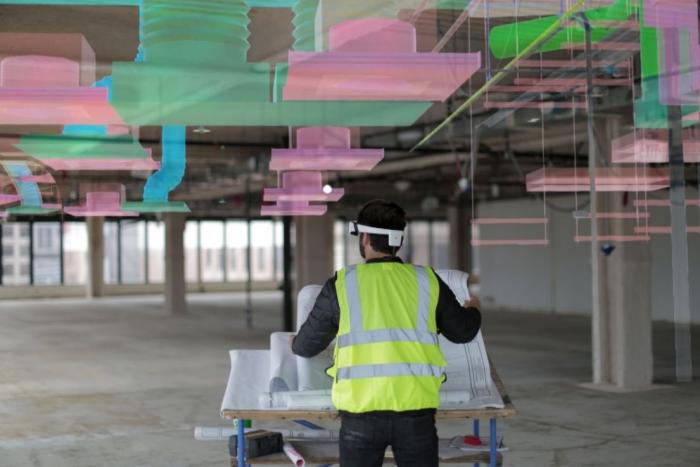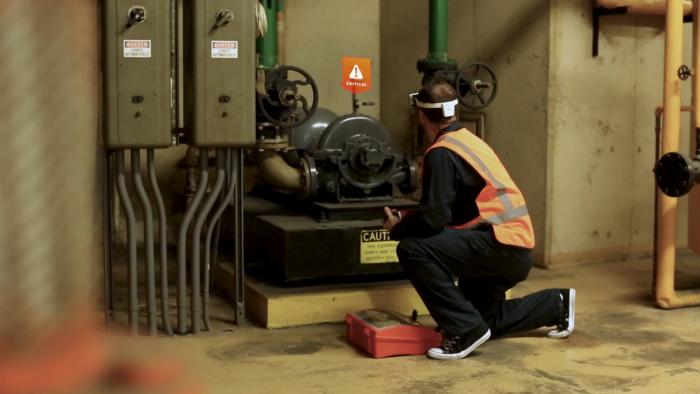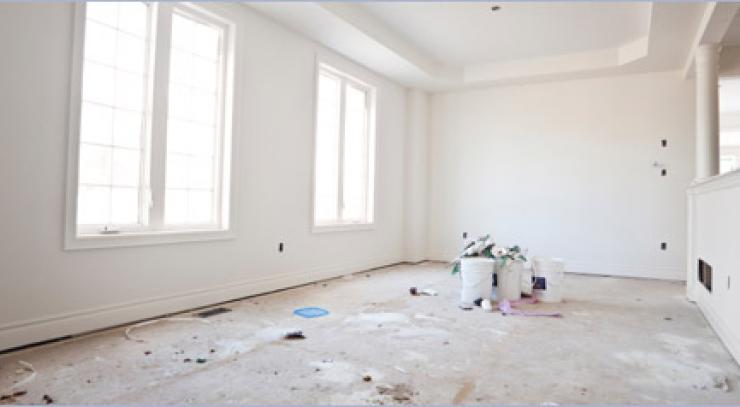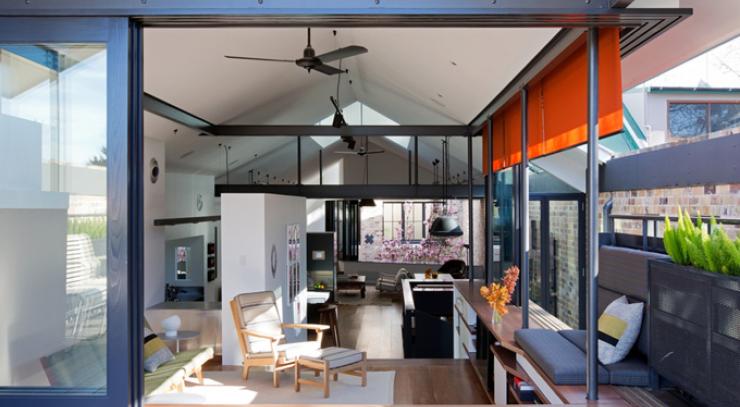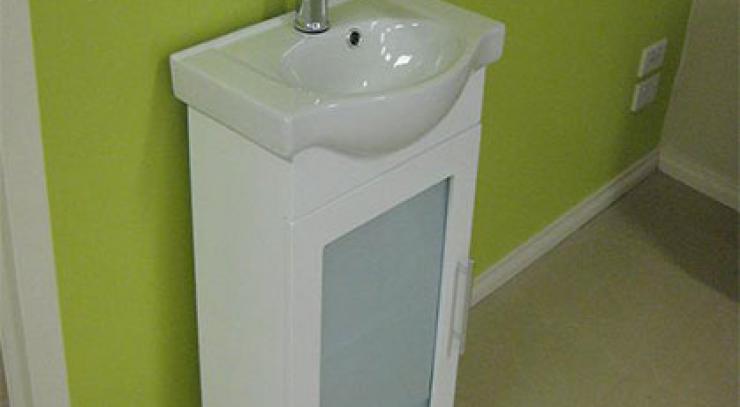Building Information Modelling (BIM) is an approach that has proved to provide significant benefits to construction companies all over the globe. This intelligent workflow has enabled stakeholders involved in the construction projects to efficiently design, maintain and share information with each other through a single source of truth, thereby eliminating the errors arising from duplication issues. BIM has further provided the opportunity to lower the cost of construction and ultimately execute the projects on time. While the benefits may have been associated with the stakeholders only, there’s a new technology that can integrate end customers in the project cycle – Virtual Reality (VR).
Source: DAQRI/Twitter
Virtual Reality has undoubtedly made a great impact across many sectors and is a perfect-fit to be applied in the construction sector as well. With VR it is possible to take a step further and allow the customers to view the project and literally walkthrough the virtual site to understand clearly how the built environment will look using real-time motion capture systems. This facility makes it possible to give feeling of more realistic visuals as compared to a computer 3D model. Customers can quickly interact with the model and get all the information about the project while walking through the virtual facility. As such, project approvals are faster.
The VR technology is still evolving, but today there are even VR accessories such as VR suits and a range of sensors that provide realistic experience to the user. These features might sound too futuristic to be applied in the construction sector right now, but imagine providing a customer with an immersive experience where he/she can touch and feel the texture of the surface in addition to seeing the built environment virtually. Giving such experiences to clients would essentially improve the chances of project approvals and would also ensure that not just stakeholders, but even the customers become a part of the project lifecycle.
Source: DAQRI/Twitter
VR however, is just a start to an immersive experience. With Mixed Reality (MR), this experience can be further augmented as you can overlay virtual objects in a real environment, blending the real and virtual world. This feature might soon become a part of the BIM process. As a matter of fact, mixed reality headset manufacturers like DAQRI have already got customers using their smart glasses to make informed decisions. With MR, users are able to gain more insights from a BIM-ready model at every stage in the construction lifecycle.
Challenges in Adopting VR & MR
One of the key challenges to adopt virtual reality technology in the construction sector is the cost of the technology itself. Building an enterprise level VR technology that works with the BIM workflow comes with a price. But thanks to the rapid growth in the field of VR, the price of the technology is coming down and if this continues, VR can become an integral part of the BIM process.
In addition to cost, one of the vital requirements to gain the benefits associated with VR is to have at least a BIM Level 2 maturity. Despite the popular UK mandate, the adoption of BIM is slow and there are many construction companies who do not employ BIM at all. As such, the primary objective within the industry is to make construction companies BIM-ready first.
Support in terms of training and partnerships with BIM consultants can speed up this process. There is also a need to rethink on the entire BIM concept, which is widely being misinterpreted within the AEC industry. It is important to understand that BIM is a process and not a software tool. However, companies selling BIM-ready tools have done very little to bring this awareness within the AEC community. Rather, they have been involved more in propagating the features of their developed tools.
The Future of Virtual Reality in Construction Industry
VR hold a lot of potential to be applied in the construction sector. The idea of allowing users to immerse in a real-like virtual environment over merely looking at a 2D screen is indeed a next step to improve the visual experience and take better decisions. The reducing cost of the technology can further increase the chances of it being utilized to represent the built environment. As the firms move forward toward greater levels of BIM maturity, VR will become a supportive tool and a part of BIM process eventually. The only concern however to bring this change faster is the slow adoption of BIM by construction firms. Speeding up this process with proper training and partnerships should be the next step to see the VR potential in action soon!
Author: Jackie Chotai
Jackie is a co-founder of ENPHY, one of the leading engineering services providing company. He primarily authors in-depth content related to BIM, steel detailing and mechanical product design to enable business owners and project stakeholders to realize the benefits of modern engineering & design tools.
